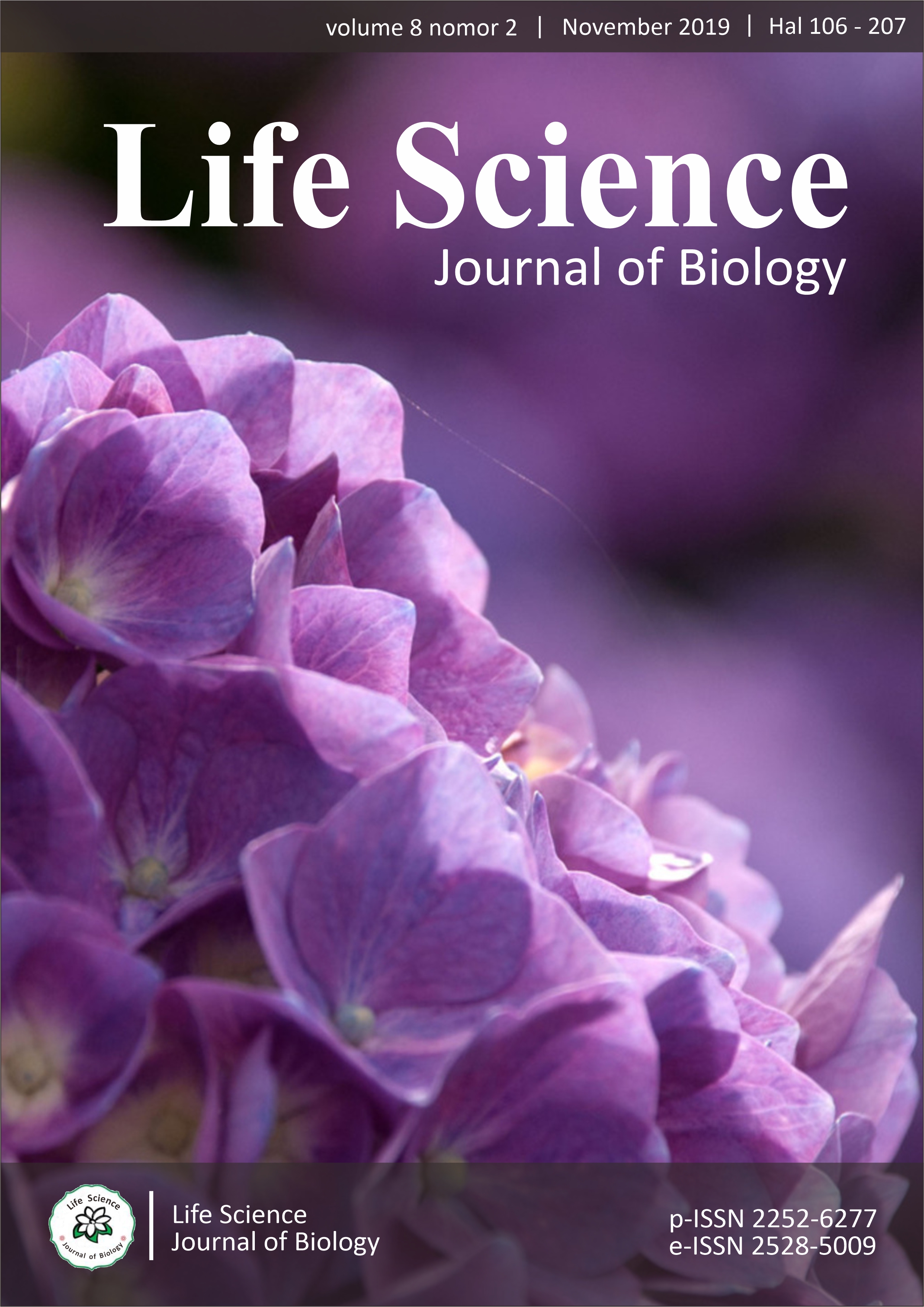Karakterisasi Kapang dari Saluran Pencernaan Cacing Nipah (Namalycastis rhodochorde) Asal Desa Sungai Kakap, Kabupaten Kubu Raya, Kalimantan Barat
Main Article Content
Abstract
Indigenous molds from the gastrovascular cavity of nipah worms have been explored and will be applied to nipah worm cultivation in order to increase growth and production through feed. Appropriate feed formula is expected to increase the growth of worms as in their natural habitat. This study aims to explore and identify the types and characteristics of indigenous fungi from the gastrovascular tract of nipah (Namalycastis rhodochorde) which have the potential as probiotics. Isolation was carried out by pour plate method on the Potato Dextrose Agar medium. Enumeration of molds was carried out according to the Standard Plate Count rules of each sample. The selection of isolates was carried out by determining the colony character unequalities to obtain pure culture. Each pure isolate culture was coded based on the type of sample. Characterization and identification of molds was carried out based on the identification guide book by Samson: Outdoor and Indoor Fungi. The total number of mold colonies obtained from coelomal fluid, intestinal tract, and feces were 7 isolates, 7 isolates and 12 isolates respectively. The results of characterization and identification found eight groups of mold isolates from nipah worms that had similarities with members of the genus Penicillium, Aspergillus, Curvularia, Fusarium, Trichoderma, Cladosporium, and Tritirachium.
Keywords: Nipah worm; molds; probiotic; Namalycastis rodhochorde, Cacing nipah; kapang; probiotik; Namalycastis rodhochorde
Kapang indigenus dari saluran gastrovaskuler cacing nipah telah dieksplorasi dan akan diaplikasikan pada budidaya cacing nipah dalam rangka meningkatkan pertumbuhan dan produksi melalui pakan. Formula pakan yang tepat diharapkan mampu meningkatkan pertumbuhan cacing seperti di habitat aslinya. Penelitian ini bertujuan untuk mengeksplorasi dan mengidentifikasi jenis dan karakter fungi indigenus dari saluran gastrovaskuler cacing nipah (Namalycastis rhodochorde) yang berpotensi sebagai probiotik. Isolasi dilakukan dengan metode cawan tuang pada medium Potato Dextrose Agar. Enumerasi kapang dilakukan berdasarkan aturan Plate Count Standart dari setiap sampel. Pemilihan isolat dilakukan dengan melihat ketidaksamaan karakter koloni untuk mendapatkan kultur murni. Setiap kultur murni isolat diberikan kode berdasarkan jenis sampel. Karakterisasi dan identifikasi kapang dilakukan berdasarkan buku panduan identifikasi kapang oleh Samson: Outdoor and Indoor Fungi. Jumlah total koloni kapang yag didapatkan dari cairan coelom, saluran usus, dan feses masing-masing adalah 7 isolat, 7 isolat dan 12 isolat. Hasil karakterisasi dan identifikasi ditemukan delapan kelompok isolat kapang dari cacing nipah yang memiliki kemiripan dengan anggota genus Penicillium, Aspergillus, Curvularia, Fusarium, Trichoderma, Cladosporium, dan Tritirachium.
Kata kunci: Nipah worm; molds; probiotic; Namalycastis rodhochorde, Cacing nipah; kapang; probiotik; Namalycastis rodhochorde
Article Details

This work is licensed under a Creative Commons Attribution 3.0 License.

